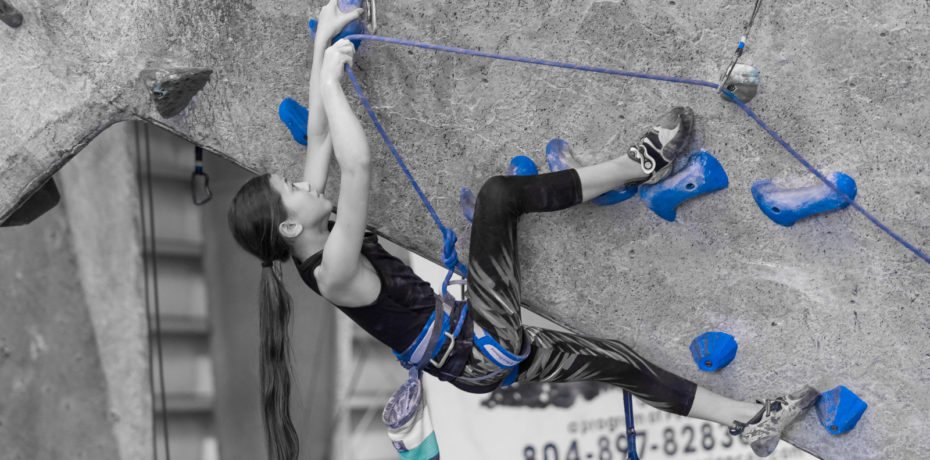My 30th birthday found me in Colorado, staring up at a sheer 45-foot rock face, strapped into a borrowed harness, and wearing shoes that were way too big. The climb was terrifying. Would the ropes hold? Would my belayer drop me? While my first send (climbing speak for making it to the top) wasn’t pretty, as soon as my feet touched the ground I wanted to do it again. As happens with so many people who try rock climbing, I had become hooked.
Rock climbing is an activity that is exactly how it sounds – you climb rocks. Climbing can happen outdoors on natural rock or indoors in a climbing gym, in fact you can even go on a rock climbing vacation if you wanted to! Typically, climbers are secured through a series of checks and balances that include equipment and people. Many forms of climbing exist, some of which include ropes, some of which include placing one’s own anchors and safety gear, and others that forgo all use of safety measures and rely solely on the climber’s skills. Within each type of climbing, the routes or problems range from relatively easy beginner problems to world class in difficulty.
Historically, rock climbing stems from early mountaineering, the act of climbing to reach the highest point of an unclimbed mountain. It gradually evolved into a sport in its own right and has grown in popularity over the last 100 years. Rock climbing has been a male-dominated activity for the better part of its history as the average male has natural strength and height advantages needed to complete certain routes. But as rock climbing has developed, so have the techniques and methods of climbing. Every climber, whether male or female, must possess a balance of mental preparedness, strength, flexibility, focus, and discipline to rock climb at any level.
Richmond is home to an almost hidden, but vibrant and growing rock-climbing community. Sarah Salmonsky, age 17; Karen Lane, 16; and Ronin Von Ofenheim, 12, are some of the area’s most accomplished competitive climbers. They were all introduced to rock climbing at an early age through Passages Adventure Camp, a weeklong outdoor adventure camp offered through Peak Experiences, Richmond’s only indoor climbing gym. Salmonsky joined the climbing team at 14 thanks to a friendship with a fellow climber and cites climbing as something that saved her life.
“Climbing is different [from most sports]. I felt really welcome and was pushed to find myself instead of conforming to everyone else,” she says. With numerous awards under her belt, Salmonsky is currently training for Nationals. “Rock climbing is 99 percent failure for the 1 person success,” says the soon-to-be freshman at Virginia Commonwealth University, reflecting on the often daunting and discouraging, but no less fun, nature of her beloved sport.
Lane, a sophomore at Steward School, began climbing as an after-school activity where she was surrounded by positive role models. Her passion lies in outdoor climbing and she became a competitive indoor climber as a way to train for those outdoor climbing goals. Her training regimen is strict and includes diet, cross training, and two climbing sessions per day. Lane says, “Climbing is 95 percent mental. A lot of people who don’t climb think the fall is the hardest part, or getting up high. But it’s getting over the fact that you are not the best [all the time]. It’s easy to train, easy to get strong. It’s hard to get on a route, do really poorly, and then get over that in a competition and send the next one.”
Von Ofenheim, a 12-year-old at Albert Hill Middle School, has been climbing things her whole life, so it was only natural that rock climbing would become second nature. Her age and small stature lend to many assumptions, all of which Von Ofenheim dismisses with, “I don’t care; I can do everything they can do.” Her tenacious nature has led her to many awards, but what she loves the most is the friendliness of the rock climbing community. “We aren’t competing against each other, more with each other,” she says. She now has friends all over the world and looks forward to traveling to climb, not with competitors, but with friends.
Rock climbing is a fascinating and physically demanding sport, but it is not just athletes who enjoy the prospect of sending a climb. All over the world, there are rock climbers of all ages, genders, and abilities. Morgan Hull, Caroline Conolly, RJ Griffis, and Tina Mullen are four such women who were introduced to rock climbing by friends and brought together through the VCU Outdoor Adventure Program (OAP) while in school. Griffis sums up recreational rock climbing by saying, “It’s more than scaling a wall; it’s perseverance, setting goals, pushing mental and physical boundaries. It teaches you a lot of life lessons.”
Mullen led OAP climbing trips while at VCU and it became a fun way for her to be outdoors while also teaching other people how to climb, especially new climbers. “I try to always get excited about first-time climbers because that was really important to me when I got into climbing; people who were really good would still get excited when I finished easy projects,” she says. Manchester Wall was the first place Mullen climbed outdoors, which is the case for most people in Richmond.
Hull, the current OAP leader and known for climbing in large hoop earrings, fell in love with climbing for the thrill of the climb (or fall). “Climbing doesn’t get boring,” she says. “It’s a creative and physical sport.” Hull loves that the sport is a shared activity between both males and females, but that it’s also a sport where strong females are celebrated and their achievements are just as noticed as their male counterparts.
Now who’s ready to go climb some rocks?

